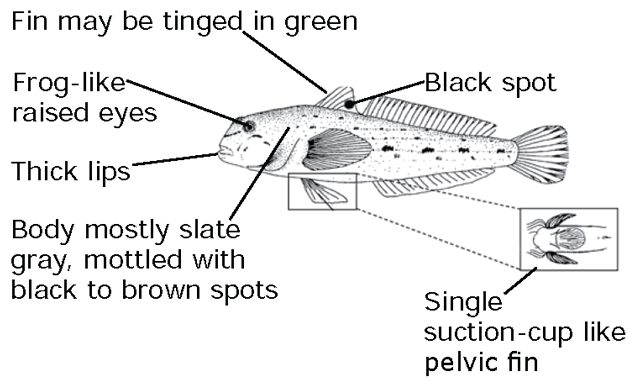Invasive species and viral hemorrhagic septicemia (VHS)
Invasive species
Invasive species are often spread unknowingly. Anglers and boaters need to be aware of the rules that apply to them and should always take precautions to help stop invasive species. Ontario’s Invasive Species Act, 2015 regulates activities to prevent the introduction and spread of species that negatively affect Ontario’s biodiversity and/or economy. Federal regulations also prohibit the introduction of all aquatic species to an area where they are not naturally found.
For more information on invasive species in Ontario, visit invasive species in Ontario. To report a sighting call the Invading Species Hotline
Prohibited invasive species
In Ontario, it’s illegal to import, possess, deposit, release, transport, breed, grow, buy, sell, lease or trade these species.
Fish:
- bighead carp
- black carp
- Eastern and Western mosquitofish
- grass carp
- ide
- Prussian carp
- red shiner
- silver carp
- snakeheads (all species in the snakehead family)
- stone moroko
- tench
- wels catfish
- zander
Invertebrates:
- common yabby (a crayfish)
- genus pacifastacus (all crayfish in the pacifasticus genus)
- genus procambarus (all crayfish in the procambarus genus) including marbled and red swamp crayfish
- golden mussel
- killer shrimp
- New Zealand mud snail
Plants:
- Brazilian elodea (Brazilian waterweed)
- European water chestnut
- hydrilla
- oxygen weed
- parrot feather
- water soldier
- watermoss (genus salvinia)
Additionally, it’s against the law to possess, transport or release live round goby, tubenose goby, rudd or ruffe in Ontario or to import zebra or quagga mussels into Canada.
Restricted invasive species
In Ontario, the following aquatic plant species are illegal to import, breed, grow, buy, sell, lease or trade, or to possess or transport within a provincial park or conservation reserve:
- Carolina fanwort
- Eurasian water-milfoil
- European frog-bit
- floating primrose-willow
- flowering rush
- Water ferns (genus azolla)
- phragmites
- yellow floating heart
Sale of prohibited invasive species
Only the following prohibited invasive species may be imported, possessed, transported, bought or sold:
- dead and eviscerated (gutted) bighead carp, black carp, grass carp, Prussian carp, silver carp, tench, zander or snakeheads
- dead red swamp crayfish, white river crayfish and signal crayfish that have been prepared for human consumption (such as cooked)
Boating rules
It is illegal to transport watercraft and watercraft equipment (anything that is used to aid in the operation, movement or navigation of a watercraft including ropes, fenders or anchors) overland unless:
- drain plugs or other devices used to control drainage have been removed or opened to allow water to drain out
- reasonable measures have been taken to remove any aquatic plants, animals, or algae from the watercraft, watercraft equipment, vehicle, and trailer
Persons who move watercraft or watercraft equipment overland must additionally ensure that prior to arriving at a launch site or placing a watercraft in any body of water, the watercraft, watercraft equipment, vehicle, and trailer are free of all aquatic plants, animals, and algae.
In addition to the rules above, if you are boating in waterbodies where European water chestnut or water soldier plants exist, you must:
- take reasonable precautions to prevent transport and deposit of plants outside the infested area to other parts of the waterbody (such as avoid boating through the infested area if you can)
- dispose of these plants so they don’t end up back in any waterbody
In general, avoid running boats through aquatic plants as propellers can break aquatic plants loose and spread invasive species.
Fishing
If you happen to catch a prohibited fish, invertebrate or plant, you must immediately destroy it in a way that ensures it cannot reproduce or grow.
Round goby
Round goby have become widely established in Southern Ontario and Lake Huron and have negative impacts on native fish. It is illegal to use gobies as bait or have live gobies in your possession. Anglers should know how to identify round goby since these aggressive fish are easily caught by hook and line. If you catch a round goby it should be destroyed as it cannot be released live into any waters. Report any new sightings.

Credit: Donna Francis
Help slow the spread of Viral Hemorrhagic Septicemia (VHS)
VHS is an infectious disease of fish that has been documented in Ontario. Infected fish may show some of the following signs:
- pale gills and organs
- bloated abdomen
- bulging eyes
- bleeding of the body and organs
- a darker body colour
VHS is not a threat to human health. Fish carrying the VHS virus are safe to eat and handle.
More information is available at Viral Hemorrhagic Septicemia or call the Natural Resources Information and Support Centre at